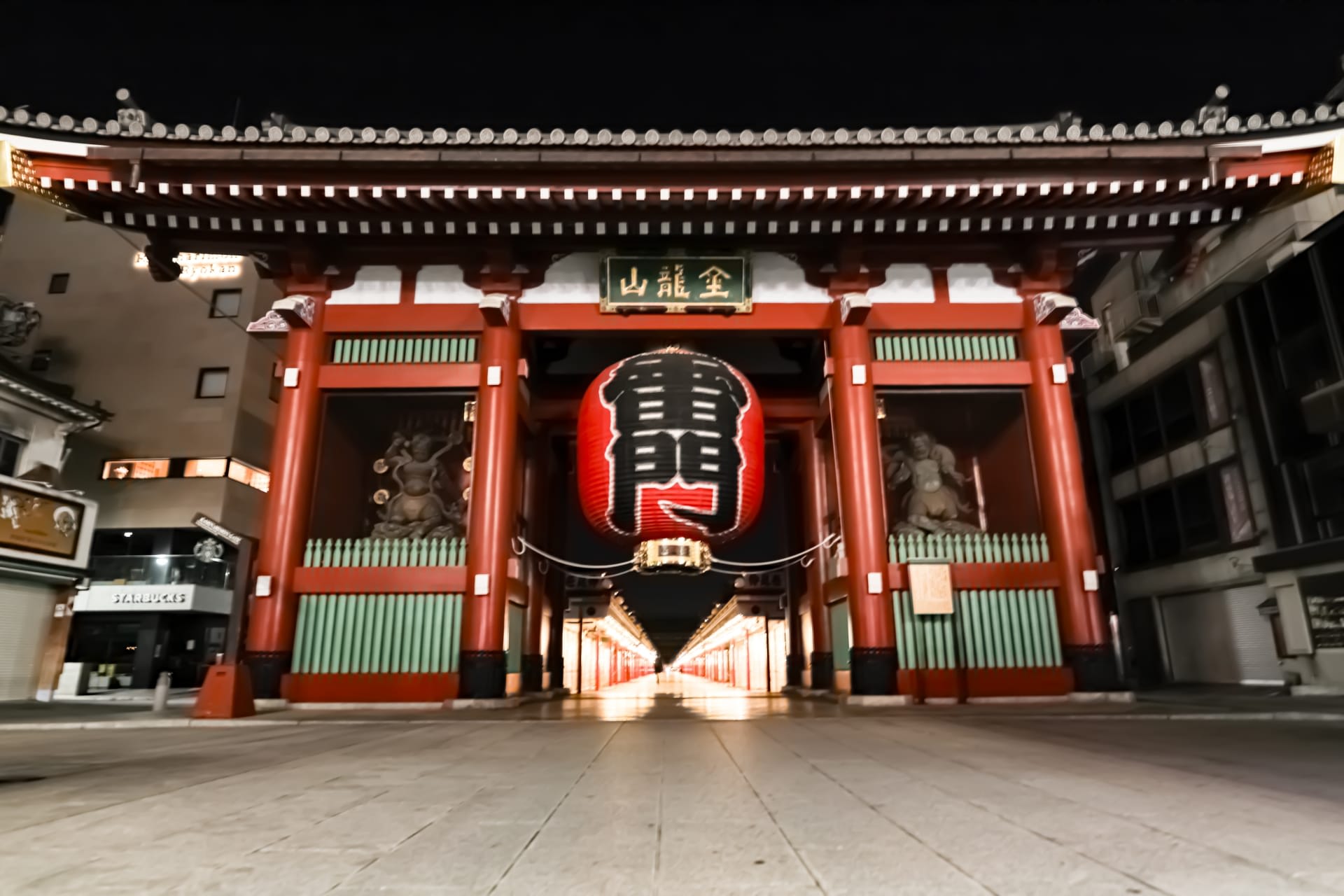The Ultimate Guide to Asakusa and Tokyo Skytree: Exploring Tokyo's Traditional Charm and Modern Marvels
I updated this article in January 2025 to incorporate my findings from this research, along with the latest information for 2025.
Another reason for updating the article is the growing interest in tours that allow visitors to enjoy sightseeing spots and Japanese traditional culture. As these tours gain popularity, Magical Trip's tour, which ranked #1 among all tours on Tripadvisor, has been receiving numerous applications.

If you're planning to visit the Asakusa area, try joining the "Asakusa Cultural Walk & Matcha Making Tour" where local guides who are experts in Japanese culture and Asakusa's attractions will show you around. Being able to explore while listening to explanations about history and traditions makes the experience several times more enjoyable than going around by yourself.
For those who love retro neighborhoods, we also recommend these two tours. Both tours allow you to fully experience Japanese traditions, and since knowledgeable guides will provide detailed explanations about Japanese culture and traditions, you can completely immerse yourself in Japanese culture.
・Yanaka Historical Walking Tour in Tokyo's Old Town
・Tokyo Sumo Morning Practice Tour in Ryogoku
We hope you'll have a wonderful time experiencing everything Ueno has to offer by joining a Magical Trip tour!
Introduction
Asakusa and the Tokyo Skytree area are where the atmosphere of Edo and the symbol of a futuristic city coexist.
The history of Asakusa, which developed around Sensoji Temple founded in 628, has continued for over 1400 years as the center of Tokyo.
On the other hand, the Skytree, completed in 2012, has reigned as Tokyo's new landmark for just over a decade.
As I pass through the Kaminarimon Gate and immerse myself in the bustle of Nakamise Street, which has continued since the Edo period, I feel as if I've traveled back in time. And when I look back, there stands the majestic Tokyo Skytree, towering at a height of 634 meters.
This area, where traditions from the Edo period and the crystallization of modern technology merge into one landscape, can be said to be a microcosm of Tokyo. I'm captivated by this mysterious harmony every time I visit.
I will convey to you the charm of Tokyo, which retains the good old Japanese appearance while constantly evolving, along with my experiences.
Why don't you dive into the fascinating world of Asakusa with its long history and Tokyo Skytree looking to the future with me?
Table of Contents
・The Charm of Asakusa: Strolling Through a Downtown Area with Edo Atmosphere
・The Allure of Tokyo Skytree: Symbol of Future Tokyo
・Walking Route Connecting Asakusa and Tokyo Skytree
・Areas to Visit Along with Asakusa/Skytree
・Frequently Asked Questions about Asakusa/Skytree
If you are interested in Asakusa, Japanese famous cultural city in Tokyo, you should definitely visit remaining retro towns.
Check out the following articles covering the sights and things to do in Asakusa, Yanaka, and other retro towns in Tokyo, so that even first-time visitors to Tokyo can fully enjoy the city's retro atmosphere.

The Charm of Asakusa: Strolling Through a Downtown Area with Edo Atmosphere
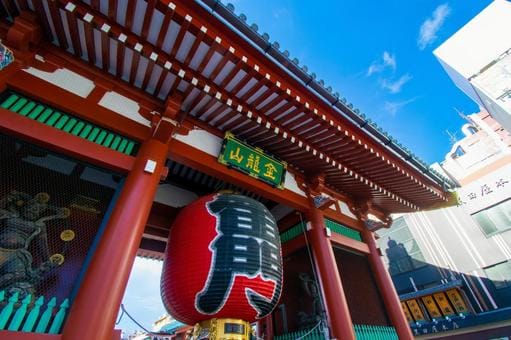
Asakusa is an area where the atmosphere of the Edo period remains particularly strong in Tokyo.
Kaminarimon Gate and Nakamise Street are symbolic places of Asakusa. When you pass through the Kaminarimon Gate with its giant red lantern hanging, you'll find the lively Nakamise Street stretching before you.
This shopping street, which has continued since the Edo period, is always bustling with people, and I'm sure you'll be overwhelmed by its energy. Every time I walk down this street, I get excited because I make new discoveries.
Sensoji Temple is known as the oldest temple in Tokyo. The majestic main hall and five-storied pagoda are symbols of traditional Japanese architectural beauty. The large incense burner in front of the main hall is always enveloped in the smoke of worshippers' prayers, creating a sacred atmosphere.
I especially like Sensoji Temple at dusk. The sight of the five-storied pagoda wrapped in soft light is indescribably beautiful.
Taking a rickshaw ride through the old townscape is also a unique experience in Asakusa. While listening to the fun commentary of the rickshaw puller, you can discover the charms of back alleys that you might not usually notice.
Asakusa Hanayashiki is a small amusement park where you can experience a retro world. Known as Japan's oldest permanent amusement park, its retro atmosphere is charming.
Sumida Park is a beautiful park right next to Sensoji Temple. It's wonderful to walk along the riverside while enjoying seasonal flowers. The cherry blossoms in spring are especially spectacular, and the reflection of the cherry blossoms on the water surface is truly a breathtaking sight.
Enjoying Edo Flavors on Nakamise Street

What I look forward to every time in Asakusa is enjoying traditional Tokyo sweets and light meals on Nakamise Street.
Hot "ningyo-yaki" is one of the specialties of Nakamise Street. These are small baked sweets in the shape of dolls, filled with plenty of sweet bean paste. When you bite into a freshly baked ningyo-yaki, the crispy outside and moist inside spread in your mouth, making you smile involuntarily.
Rice crackers are also a must-try specialty of Nakamise Street. It's exceptional to taste freshly baked rice crackers at shops where the savory aroma of soy sauce wafts. The crispy texture and the perfect saltiness that spreads in your mouth are so good that I can't help eating several pieces.
In the surrounding area, there are also restaurants where you can enjoy Tokyo's specialty, monjayaki. Monjayaki is a flour-based dish known as a taste of downtown Tokyo. The unique style of cooking it yourself on an iron plate and eating with a small spatula will be a fresh experience for foreign tourists.
Unique Experiences Around Sensoji Temple

Around Sensoji Temple, there are various places where you can have unique experiences besides traditional temple visits. Here are some experiences I especially recommend:
First, the view from the observation deck of the Asakusa Culture Tourist Information Center is not to be missed. From this observation deck in this modern building, you can see Sensoji Temple, the five-storied pagoda, and even Tokyo Skytree in the distance.
Enjoying a town walk in rented kimono is also a unique experience in Asakusa. I tried it once, and walking on the stone-paved alleys wearing a kimono really made me feel like I had traveled back to the Edo period.
Taking commemorative photos in kimono is also popular, and if you post them on social media, your friends will surely be envious.
Riding a rickshaw will also be an unforgettable experience. Skilled rickshaw pullers will guide you through the back alleys and historical spots of Asakusa while providing fun commentary.
Lastly, I also recommend the Sumida River cruise. The view of Tokyo from the water is completely different from that on land. The cruise is especially spectacular during the cherry blossom season in spring or during the fireworks festival in summer.
When I took the cruise last summer, I was breathless at the beauty of the fireworks reflected on the water surface. The sight of Tokyo Skytree viewed from the boat was also different from that on land and was a fresh experience.
The Allure of Tokyo Skytree: Symbol of Future Tokyo

Tokyo Skytree, completed in 2012, is the world's tallest self-supporting broadcasting tower, watching over Tokyo with its overwhelming presence.
When I first looked up at Tokyo Skytree up close, I was speechless at its height and beauty. The height of 634 meters has an overwhelming impact beyond imagination.
The charm of Tokyo Skytree is not just its appearance. The 360-degree panoramic view from the Tembo Deck is breathtakingly beautiful. On a clear day, you can see not only the cityscape of Tokyo but also as far as Mount Fuji.
Shopping and dining at the attached shopping mall "Solamachi" is also one of the great pleasures of visiting Tokyo Skytree. Here, fashion shops and restaurants reflecting Japanese trends are gathered.
Website: https://www.tokyo-skytree.jp/en/
Spectacular Viewpoints Only Available at Skytree
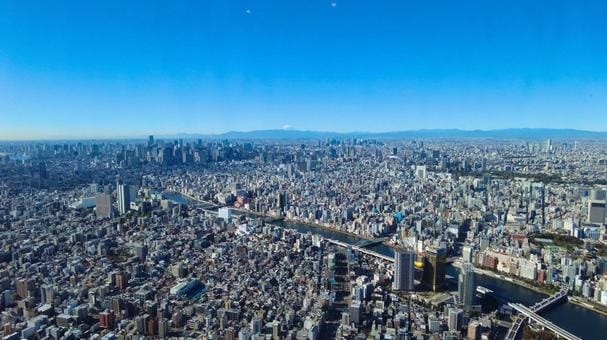
The view from Tokyo Skytree's observation deck is truly spectacular. Even after visiting many times, I'm always captivated by its magnificence. Let me introduce you to the special views that can only be enjoyed here.
The most impressive thing is that you can see Mount Fuji and the Tokyo cityscape at the same time. On a clear day, when you stand on the Tembo Deck, you can see the majestic figure of Mount Fuji in the far western direction.
Enjoying Tokyo's illumination at dusk is also a unique experience at Skytree. As the sun begins to set, the city lights gradually start to come on, and the sight of Tokyo beginning to shine is spectacular.
What I recommend is going up to Skytree about an hour before sunset. The contrast between the changing colors of the sky and the gradually brightening city lights is very beautiful.
Also, from Skytree, you can enjoy a "treasure hunt" of looking for Tokyo's major landmarks. On a clear day, you can find buildings and places representing Tokyo, such as Tokyo Dome, the skyscrapers of Shinjuku, the Imperial Palace, and Tokyo Tower.
I look forward to finding new landmarks every time. Especially when I guide friends visiting Tokyo for the first time, this "treasure hunt" is very exciting.
Enjoying Gourmet Food and Shopping at Solamachi
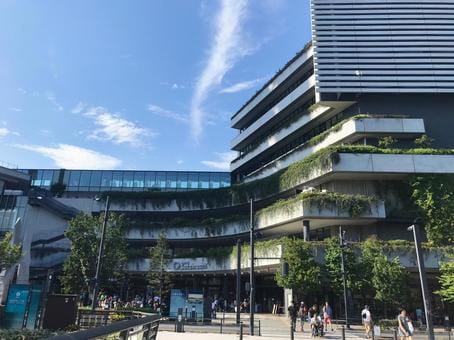
Tokyo Solamachi, the commercial facility spreading at the foot of Tokyo Skytree, is an ideal place to enjoy gourmet food and shopping.
First, the food court where various restaurants are gathered is a wonderful place to enjoy famous Japanese dishes all at once.
The souvenir shops selling limited Skytree goods are also places you must visit. The uniquely designed goods that can only be obtained here are perfect as souvenirs for friends and family.
Shopping for trendy Japanese fashion is also a big attraction of Solamachi. From famous brand shops to pop-up stores of young designers, a wide range of fashion items are available.
Please enjoy your time at Solamachi to conclude your Skytree sightseeing.
Walking Route Connecting Asakusa and Tokyo Skytree
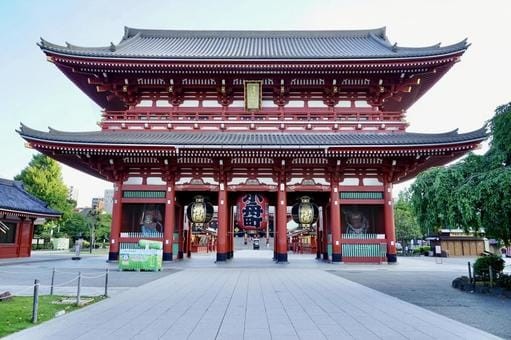
The walking route connecting Asakusa and Tokyo Skytree is a wonderful course where you can enjoy the atmosphere of the Edo period and modern Tokyo at once. I would like you to experience this route that I have walked many times.
First, start from Asakusa Station. As soon as you exit the station, you'll see the Kaminarimon Gate with its giant red lantern, and passing through it, you'll find the lively Nakamise Street stretching before you.
After passing through Nakamise Street, you'll arrive at the main hall of Sensoji Temple. The majestic main hall and five-storied pagoda welcome visitors with their unchanged appearance since the Edo period. The atmosphere of the temple grounds, where incense smoke lingers, makes you forget the hustle and bustle of the modern world.
After leaving Sensoji Temple, head to Sumida Park. The riverside promenade is a pleasant space where time flows slowly. Especially in spring, you can enjoy a magnificent row of cherry trees.
On the way, I recommend enjoying the local atmosphere on Orange Street. This street is lined with shops and eateries that local people use daily.
The walk along the Sumida River towards Skytree takes about 20 minutes. During this time, you can enjoy the contrast between the Tokyo cityscape visible across the river and the gradually approaching Skytree.
Finally, at Solamachi, you can enjoy modern shopping and gourmet food. I recommend having dinner here to conclude the day.
This route can be covered in about 1.5 to 2 hours walking leisurely from Asakusa Station to Skytree. However, if you want to enjoy the sights and food along the way, I recommend taking half a day to leisurely explore.
This route, where you can experience Tokyo's history and culture from the Edo period to the present day at once, can be said to be the essence of Tokyo sightseeing.
How to Enjoy Each Season
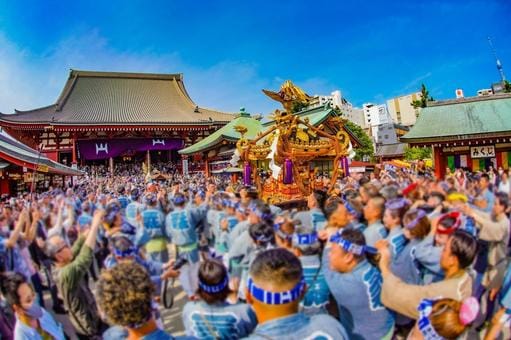
The Asakusa and Tokyo Skytree area is full of charm in every season. I look forward to visiting this area every season, and I'd like to introduce you to unique ways to enjoy each season.
Spring's main attraction is the cherry blossom festival at Sumida Park. The sight of many cherry trees in full bloom is spectacular, and the riverside promenade is crowded with cherry blossom viewers. My recommendation is cherry blossom viewing on a yakatabune boat. The contrast between the fully bloomed cherry blossoms viewed from the river and Tokyo Skytree towering behind them is a spectacular sight.
At night, the cherry blossoms are illuminated, creating a fantastic atmosphere. I still vividly remember the memory of enjoying night cherry blossoms on a yakatabune boat with my friends last year.
The biggest events in summer are the Sanja Festival and the Sumida River Fireworks Festival. The Sanja Festival is the grand festival of Asakusa Shrine, held every May. The sight of portable shrines parading through the town is full of energy, just like in the Edo period. The Sumida River Fireworks Festival, held in late July, is a summer tradition in Tokyo where about 10,000 fireworks color the night sky.
In autumn, you can enjoy viewing the autumn leaves at Sensoji Temple and Sumida Park. Especially, the scenery of trees turning red and yellow with the five-storied pagoda of Sensoji Temple in the background is a sight that condenses the beauty of Japanese autumn.
Asakusa in winter is full of energy with the bustle of the year-end and New Year. The New Year's Eve bell ringing at Sensoji Temple is a particularly impressive event.
Listening to the bell rung 108 times on New Year's Eve while welcoming the new year is a traditional Japanese custom. I once went to listen to the New Year's Eve bell with my friends, and the experience of welcoming the new year in a solemn atmosphere became an unforgettable memory.
This area, where you can make new discoveries every time you visit and experience the charm of each season, can truly be said to be a tourist spot that can be enjoyed all year round.
Train Access Information
Access to the Asakusa and Tokyo Skytree area is very convenient. Here are the main stations and lines:
You can access Asakusa Station via the following lines:
1. Tokyo Metro Ginza Line
2. Toei Subway Asakusa Line
3. Tobu Skytree Line
On the other hand, the nearest station to Tokyo Skytree is "Tokyo Skytree Station" on the Tobu Skytree Line.
My recommendation is to first get off at Asakusa Station, enjoy Sensoji Temple and Nakamise Street, and then head to Skytree on foot or by bus. It's about a 20-minute walk from Asakusa Station to Skytree, but I suggest walking on a nice day as you can enjoy the downtown scenery along the way.
Access from Tokyo's major stations is also easy. For example, from Tokyo Station to Asakusa Station takes about 20 minutes on the Tokyo Metro Ginza Line, and from Shinjuku Station, it takes about 30 minutes by transferring from the Toei Shinjuku Line to the Asakusa Line.
Tokyo's public transportation is very well-developed, so you can easily access the Asakusa/Skytree area from any direction.
However, trains get crowded during morning and evening rush hours, so it's better to avoid these times if possible.
Also, Japanese trains are famous for running on time. I recommend checking the timetable and allowing plenty of time for your journey.
Areas to Visit Along with Asakusa/Skytree
Here, I'll introduce areas to visit along with Asakusa and Skytree.
Ueno

Ueno is located in the same downtown area of Tokyo as Asakusa and Skytree, and it's an attractive place where culture and nature are in harmony. I've been captivated by Ueno's charm since my student days, and it's still a favorite place I frequently visit.
Ueno Park is an urban oasis where you can enjoy the beauty of all four seasons. The cherry blossom season in spring is especially spectacular, with about 1,000 cherry trees in full bloom. The autumn foliage is also magnificent, and walking under trees that have turned red and yellow is a wonderful experience that calms the heart.
Ueno Zoo is known as the oldest zoo in Japan, but pandas are by far the most popular attraction.
Ameyoko (Ameya Yokocho) is a lively shopping street that developed from a black market after World War II. The approximately 500-meter street is packed with all kinds of shops, including food stores, clothing stores, and general stores.
The unique atmosphere of this area, where cultural facilities, nature, and downtown atmosphere are fused, makes you feel the diversity of Tokyo. After experiencing the Edo atmosphere in Asakusa and the futuristic feel at Skytree, you can have a deeper Tokyo experience by touching Japanese culture and nature in Ueno.
Access:
・About 5 minutes from Asakusa Station to Ueno Station on the Tokyo Metro Ginza Line
・About 15 minutes total from Skytree to Ueno Station: Take the Tobu Skytree Line to Asakusa Station, then the Tokyo Metro Ginza Line to Ueno Station
Akihabara

Akihabara is known as an electric town, but it's also famous as the center of Japanese pop culture. It's a place where you can experience modern Japanese culture, completely different from Asakusa and Tokyo Skytree.
The electric town is synonymous with Akihabara, packed with the latest gadgets and electronic products. You can find everything from electronic components for DIY projects to retro electronics.
Recently, shops where you can experience the latest technologies like VR and drones have been increasing, making it an irresistible place for technology enthusiasts.
Akihabara is also known as a holy land for anime and manga. Large anime shops and figure shops line the streets, allowing you to fully enjoy Japanese pop culture.
When I find nostalgic character goods, I can't help but feel like a kid again. It's not uncommon to see cosplayers on the streets as well.
Maid cafes are a unique experience in Akihabara. When I first went there invited by a friend, I was bewildered by its unique atmosphere, but now I enjoy it as part of Akihabara culture. Staff dressed in maid costumes serve you as if they've jumped out of an anime world.
Some cafes even offer game or song performances, providing more entertainment than just a regular restaurant.
Access:
・About 8 minutes from Asakusa Station to Suehirocho Station on the Tokyo Metro Ginza Line, then a 5-minute walk
・About 20 minutes total from Skytree: Take the Toei Asakusa Line to Asakusa Station, then the Tokyo Metro Ginza Line to Suehirocho Station
Nihonbashi
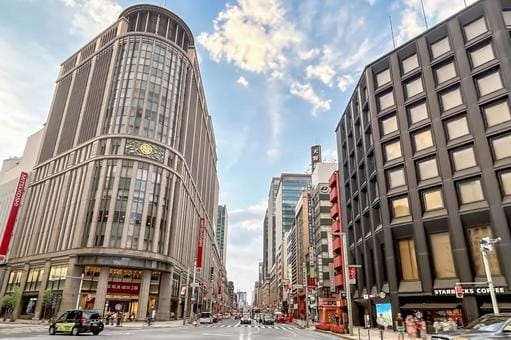
Nihonbashi is an area with a long history as the center of commerce and culture in Tokyo.
Nihonbashi itself is a historical bridge known as the starting point of Japan's roads since the Edo period. The current bridge is a stone arch bridge built in 1911, and its beautiful appearance has become one of Tokyo's symbols.
When you see the marker at the center of the bridge indicating the origin of Japan's road network, you can really feel that this is the center of Japan's road system.
The long-established department store "Mitsukoshi" is a representative high-end shopping spot in Nihonbashi. Since its opening in 1904 as Japan's first department store, it has continued to reign as the center of Japanese commerce.
What I particularly like is the food floor in the basement. There are so many delicious items lined up, from specialties from all over Japan to Japanese sweets carefully made by artisans, that it's hard to decide what to choose.
The Bank of Japan Head Office is a Western-style building constructed in the Meiji era, and its dignified appearance gives a unique atmosphere to the Nihonbashi streetscape. The red brick exterior and dome-shaped roof are characteristic, giving an impression like an old European castle.
Recently, redevelopment of the Nihonbashi area has been progressing, creating a unique landscape where skyscrapers and historical buildings coexist. Especially the nighttime illuminated streetscape is fantastic, symbolizing the fusion of modern and traditional Tokyo.
Access:
・About 30 minutes from Asakusa Station to Nihonbashi Station on the Tokyo Metro Ginza Line
・About 20 minutes from Skytree to Nihonbashi Station on the Toei Asakusa Line
Frequently Asked Questions about Asakusa/Skytree
Finally, I'll answer frequently asked questions about the Asakusa and Skytree area.
What Are the Visiting Hours for Sensoji Temple?
The main hall opening hours are as follows:
・April to September: 6:00 AM to 5:00 PM
・October to March: 6:30 AM to 5:00 PM
On the other hand, the grounds of Sensoji Temple are open 24 hours a day. This means that even if you can't visit the main hall, you can always stroll around the temple grounds.
My recommendation is early morning visits. Especially in summer, if you visit right at 6:00 AM when it opens, there are fewer tourists, and you can pray in a relaxed atmosphere.
Also, during the New Year's period (from New Year's Eve to around January 3rd), it's open all night. Listening to the New Year's Eve bell while welcoming the new year is one of Japan's traditional customs.
If you want to take photos, early morning is also recommended. The five-storied pagoda illuminated by the morning sun or the temple grounds wrapped in morning mist are truly spectacular scenes. Especially when Nakamise Street is still quiet, you can capture the quiet side of Asakusa that you can't see usually.
However, opening hours may differ during festivals and events. I recommend checking the official website for the latest information before your visit.
Do I Need to Book Tickets for Tokyo Skytree in Advance?
Let me explain about purchasing tickets for Tokyo Skytree, including my own experiences.
First, same-day tickets are sold, but you might have to wait for a long time during busy periods. When I first visited Tokyo Skytree, I bought a same-day ticket but ended up waiting for over 30 minutes. It can get very crowded, especially on weekends, holidays, and during tourist seasons.
Therefore, I recommend booking in advance on the official website. Since my second visit, I always book in advance, and the big advantage is being able to enter smoothly without waiting.
Advance booking is strongly recommended especially if you want to enjoy the view at dusk or the night view. When I visited at dusk, the view was spectacular, and the gradually changing Tokyo cityscape became an unforgettable memory.
However, pre-booked tickets cannot be refunded except in case of closure due to bad weather, so it's important to allow flexibility in your schedule. Also, it may still be crowded during peak seasons even with advance booking, so I recommend allowing plenty of time.
Which Is Better, Tokyo Skytree or Tokyo Tower?
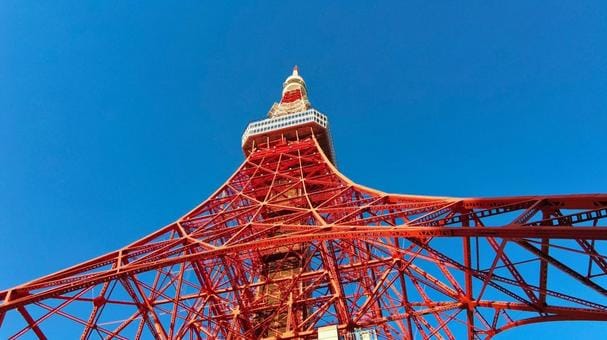
Both Tokyo Skytree and Tokyo Tower are representative observation towers of Tokyo, but they each have different charms. I've visited both many times, and each time I make new discoveries and feel that they both have irresistible charms.
The charm of Tokyo Skytree is its higher and wider observation deck and the latest facilities. Also, the view of Mount Fuji on clear days seems better from Skytree. The surrounding facilities like Solamachi are also well-developed.
On the other hand, the charm of Tokyo Tower lies in its classic atmosphere and convenient access from the city center. Tokyo Tower also has high historical value.
Personally, I think the most enjoyable way is to visit both and compare them. I've even made greedy sightseeing plans where I enjoyed Tokyo's vast scenery from Skytree during the day and enjoyed Tokyo Tower's romantic atmosphere at night.
Also, the impression of the scenery changes greatly depending on the season and time of day, so it's well worth visiting multiple times. For example, from Skytree, you can overlook the changing seasons like spring cherry blossoms and autumn foliage, while Tokyo Tower is especially beautiful with its night illumination.
The Asakusa and Tokyo Skytree area is a condensed version of Tokyo's charm, where traditions continuing from the Edo period are fused with cutting-edge technology.
At Sensoji Temple and Nakamise Street, you can experience Japanese traditional culture with over 400 years of history, while from Skytree, you can overlook the appearance of futuristic Tokyo.
When visiting Tokyo, please use this article as a reference to spend a fulfilling time in the Asakusa/Skytree area!



